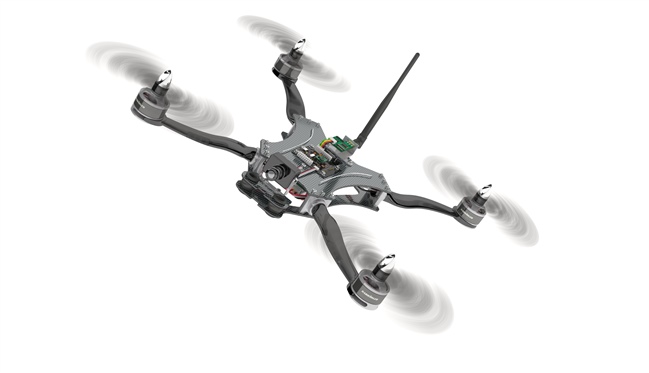SSZTA41 june 2017 DRV8320
Brushless DC motors are definitely the cool thing in motor drives – and for good reason. You get higher efficiency, higher power, higher torque, lower noise, lower electromagnetic interference (EMI), lower vibration, longer battery life, longer motor life, faster speeds, better products, a greater wow factor, more enjoyment, more intelligence, more friends, better looking and the adoration of countless followers. With this list I may have drifted off into my personal hopes and dreams (see Figure 1), so let’s just say “results may vary.”
 Figure 1 Brushless DC: The Official
Sponsor of My Hopes and Dreams
Figure 1 Brushless DC: The Official
Sponsor of My Hopes and DreamsWhen it comes to brushless DC motor driving, the fun part is the algorithm. You can implement sensored or sensorless monitoring, trapezoidal or sinusoidal control, field-oriented control (FOC) or block commutation. The options are as endless as the number of ways you can cook an egg – that is, there are only really like 10 truly unique ways to do it (everyone else is just a minor variation). But I’m not going to talk about any of that right now. I’m going to talk about step zero: designing your hardware for a motor-drive system. Feel free to run away in horror at this point. Figure 2 demonstrates my impression of this phenomenon.
 Figure 2 Comfort Level Decreases
Linearly with Voltage Level and Analog Content
Figure 2 Comfort Level Decreases
Linearly with Voltage Level and Analog ContentFor the six readers that remain, many, many brushless-DC motor systems are designed for high power and high efficiency, which means that the best implementation is a microcontroller (MCU) controlling a gate driver with discrete MOSFETs. Before you go about testing out the best speed-loop algorithm to control your motor, you need to simply interface the MCU’s intelligence with the MOSFET’s raw current-driving capability. The gate driver acts as a translator between the logic domain of the MCU and the power domain of the MOSFETs and motor.There are two architectures for implementing this kind of translator: a discrete gate driver and an integrated gate driver. There are great reasons why you might want to pick either of these options. Discrete drivers offer the highest supply voltage support and the highest performance, but require more components and lack protection features. Integrated drivers offer a more specific solution for motor drives, but will not give you the voltage support or the super-high performance of a discrete gate driver. Beyond just being three discrete gate drivers in one chip, integrated drivers, like the DRV8320, can also offer additional features like gate-drive supplies, sense amplifiers, power components or integrated gate-drive passives. For those of you who just skimmed the above paragraph (tl;dr anyone?), you can look at the table below.
| Discrete Gate Driver | Integrated Gate Driver | |
|---|---|---|
| Voltage range | Up to 600 V (or greater) | Normally 60 V or less |
| Gate drive current | Up to 4 A (or greater) | Normally 1 A or less |
| Gate drive supply | Needs separate supply | Integrated supply |
| Propagation delay | Super-fast | Fast enough |
| Dead time | Inserted from MCU | Inserted by gate driver |
| Controls inputs needed | 6 | 6 or 3 or 1 |
| External components | Lots | Few |
| Protection features | None (or little) | Included |
| 100% PWM support | No | Yes |
In part 2 of this series, I’ll create and showcase the schematic and layout differences between discrete and integrated drivers as I put to the test my capabilities of actually doing schematic and layout. Wish me luck!
Have you made more friends through the miracle of brushless DC motors? What do you think about gate drivers? Make sure to subscribe to this blog for more information about motor drives.
Additional Resources
- View the DRV8320 data sheet.
- Read about the demand for increasing power density in power tools.
- Check out the 18V/1kW, 160A Peak, >98% Efficient, High Power Density Brushless Motor Drive Reference Design.
- Learn about the smart gate drive of the three-phase DRV8320.